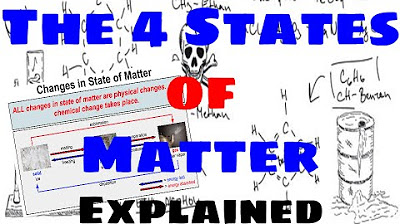WAJIB TAU! KATA KERJA BAHASA INGGRIS INI SERING DISALAHGUNAKAN | TEATU - Kampung Inggris LC
Summary
TLDRIn this educational video, Mr. Ferry explains the differences between verb forms in English: verb 1 (infinitive), verb 2 (past tense), and verb 3 (past participle). He highlights the use of verb 1 for present and future actions, verb 2 for past actions, and verb 3 for present perfect tense and passive voice. Through various examples, he clarifies common misconceptions and guides viewers on correct verb usage. The video is designed to help learners understand and apply these verb forms effectively in everyday English communication.
Takeaways
- 😀 Verb 1 (Infinitive) is used for present and future tenses, describing actions happening regularly or in the future.
- 😀 Verb 2 (Past Tense) is used to describe actions completed in the past, often with time expressions like 'yesterday' or 'last week'.
- 😀 Verb 3 (Past Participle) is used in present perfect tense and passive voice constructions, often with 'have' or 'has'.
- 😀 The base form of verbs (Verb 1) does not have any suffixes like '-s,' '-ed,' or '-ing'.
- 😀 In present tense, Verb 1 is used to describe routine actions or things happening right now (e.g., 'I always go to school').
- 😀 For future actions, Verb 1 follows the word 'will' (e.g., 'He will eat noodles tonight').
- 😀 Past tense (Verb 2) describes actions that happened at a specific time in the past (e.g., 'We went to school yesterday').
- 😀 The present perfect tense uses Verb 3 to describe actions that have just been completed or actions with relevance to the present moment (e.g., 'I have gone to the mall').
- 😀 Verb 3 is also used in passive voice constructions, often with a form of 'to be' (e.g., 'The letter has been written').
- 😀 Time indicators like 'yesterday,' 'last week,' and 'two days ago' are used with Verb 2 to specify past events.
Q & A
What is the main topic of the tutorial in the video?
-The main topic of the tutorial is the usage of verb forms in English, specifically verb 1 (base form), verb 2 (past tense), and verb 3 (past participle), and how they are used in different tenses.
What does verb 1 (base form) represent in English?
-Verb 1 is the base form of a verb, used in the present tense to describe routine actions or ongoing actions, and in the future tense to describe actions that will happen.
Can you give an example of verb 1 used in a sentence?
-An example of verb 1 is 'I always go to school.' This sentence shows an action that happens regularly in the present.
What is the difference between verb 1 and verb 2?
-Verb 1 is used for present or future actions, while verb 2 is used for past actions. Verb 2 is the past tense form of a verb.
What is verb 2 used for in English?
-Verb 2 is used for past tense actions, referring to activities that have already occurred.
Give an example sentence using verb 2.
-An example using verb 2 is 'We went to school yesterday.' Here, 'went' is the past tense of 'go'.
When do we use verb 3 (past participle)?
-Verb 3 is used in the present perfect tense, indicating actions that were completed recently or have relevance to the present. It is also used in passive voice sentences.
What is the structure of a sentence with verb 3 in the present perfect tense?
-In the present perfect tense, the structure is 'have/has + verb 3.' For example, 'I have gone to the mall.'
What is the difference between 'have' and 'has' in present perfect sentences?
-'Have' is used with the subjects 'I,' 'you,' 'we,' and 'they,' while 'has' is used with 'he,' 'she,' and 'it.'
How do you recognize when to use verb 2 (past tense) in a sentence?
-Verb 2 is used when referring to an action that occurred in the past. Look for time markers like 'yesterday,' 'last week,' or 'two days ago' to help identify when to use verb 2.
Outlines

This section is available to paid users only. Please upgrade to access this part.
Upgrade NowMindmap

This section is available to paid users only. Please upgrade to access this part.
Upgrade NowKeywords

This section is available to paid users only. Please upgrade to access this part.
Upgrade NowHighlights

This section is available to paid users only. Please upgrade to access this part.
Upgrade NowTranscripts

This section is available to paid users only. Please upgrade to access this part.
Upgrade NowBrowse More Related Video

The Four States of Matter - Explained

Lab Equipment - Explained

3. Gr 11 Life Sciences - Population Ecology - Theory 3 Mark Recapture Method

4. Gr 11 Life Sciences - Population Ecology - Worksheet 1

PENJASKES KELAS X - SOFTBALL

Introduction to Culture [AP Human Geography Review Unit 3 Topic 1]

Menentukan Mr ( massa molekul relatif )
5.0 / 5 (0 votes)